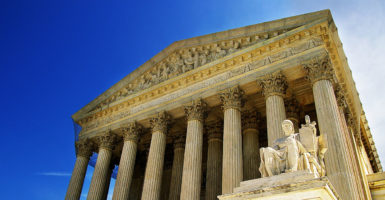Readers might recall that, in 2012, the Supreme Court of the United States upheld the constitutionality of the Patient Protection and Affordable Care Act, colloquially known as Obamacare, by a 5-4 vote in a case captioned NFIB v. Sebelius.
Last year, Congress revised Obamacare. In the Tax Cuts and Jobs Act of 2017, Congress eliminated the penalty imposed on people who do not purchase health insurance by reducing the penalty to $0 effective January 2019.
What makes that 2017 law interesting for present purposes is this: Chief Justice John Roberts wrote the controlling opinion in NFIB v. Sebelius; he concluded that the Obamacare penalty can be characterized as a “tax”; and he decided that, so viewed, Obamacare was a constitutional exercise of Congress’ power to raise taxes.
Enter Texas. In February of this year, Texas and several other states filed a lawsuit alleging that, by reducing the Obamacare tax to zero, Congress eliminated the only basis on which the Supreme Court had upheld the constitutionality of Obamacare. A sine qua non of a tax is that it generates revenue, Texas argued, and beginning in January 2019 Obamacare will no longer do so.
Accordingly, concluded Texas, starting next year Obamacare can no longer be upheld as a lawful exercise of Congress’ taxing power, so the federal courts should hold the law unconstitutional now.
The possibility that Obamacare could yet be consigned to the ash heap delighted some and troubled others. (For my opinion on the matter, see here.) Recently, the Department of Justice filed its answer to the Texas complaint. In it, the department agreed with the plaintiffs that Obamacare will become unconstitutional once the individual mandate penalty effectively disappears next year.
The Justice Department believes that, as a result, several provisions of Obamacare must go, such as the requirement that insurance companies provide coverage to someone with a pre-existing condition—but the Justice Department thinks that the rest of the statute can stand.
Texas disagrees. It argues that the Obamacare statute is like the base in Jenga: Once you remove the critical elements, the entire superstructure falls apart.
So what happens now? Here is how the case might proceed.
The district court is likely to act without delay. Why? There are no facts in dispute, only (at most) two legal issues: Is Texas right that Obamacare can no longer be upheld as a lawful exercise of Congress’ taxing power? If “No,” game over. If “Yes,” then is Texas also right that the unconstitutional portion(s) of the law cannot be severed from the remainder without leaving Obamacare a jumble of words that does not make sense?
Those issues may be difficult to resolve legally, but there is no need for a trial over the facts. Plus, the district court knows that, in all likelihood, the Supreme Court will ultimately have to resolve this dispute and that, the closer it gets to January 2019, the more attention there will be on the effect of eliminating the “tax” on the insurance markets.
The Supreme Court will need to decide this issue because of the odd way that it upheld the constitutionality of Obamacare in NFIB v. Sebelius. Four justices concluded that Obamacare was a lawful regulation of commerce, and four disagreed. Roberts was the fifth vote to uphold Obamacare. He decided that the health care law could be upheld as a tax, but not as a regulation of commerce.
The result was that five justices found the law constitutional, but they disagreed about why.
Given the odd nature of the court’s lineup in NFIB v. Sebelius and the pending disappearance of the “tax,” it is incumbent on the Supreme Court to take up the issue once again and—hopefully—come up with a majority opinion that puts the matter to rest.
Once the district court issues its decision, it is possible for one or more parties to ask the Supreme Court to review the case even before the U.S. Court of Appeals for the 5th Circuit does.
How? One of the parties could file in the Supreme Court what is known as a “petition for a writ of certiorari before judgment,” a mechanism that allows a party to leapfrog over the appeals court and go directly to the Supreme Court.
The Supreme Court does not have to grant such a petition, and it prefers to have at least one appeals court review an issue before taking it up, because it likes the help that comes with having three circuit judges write about a problem. But it may not make much of a difference because the court of appeals is also likely to act expeditiously.
Regardless of how the case reaches the Supreme Court, it is likely that the Supreme Court will revisit the constitutionality of Obamacare this fall. With luck, the whole matter will finally be resolved before the end of this year. Stay tuned.

























